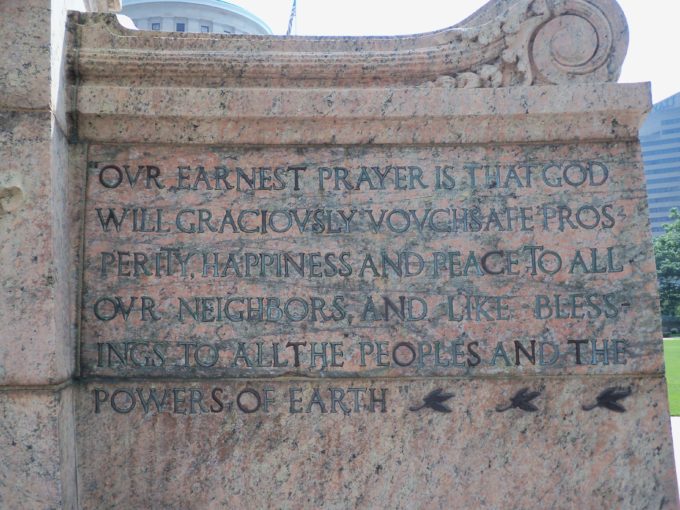
Friday, 3 January 2020
Simon Peter, a bondservant and apostle of Jesus Christ,
To those who have obtained like precious faith with us by the righteousness of our God and Savior Jesus Christ: 2 Peter 1:1
The epistle begins with an introduction by the apostle. In Greek, it reads Symeon Peter. The only other time the name Symeon is applied to Peter is in Acts 15:14 when being spoken of by James. The introduction of the epistle with the Hebraized form of his name is probably intended to have the Jewish recipients more fully identify with him. The name is derived from the Hebrew Shimon, or “He Who Hears.”
After stating his name, he then says, “a bondservant and apostle of Jesus Christ.” This is a unique phrase for an apostolic introduction, but it is close to that of Paul’s salutation to Titus where he said, “Paul, a bondservant of God and an apostle of Jesus Christ.”
A doulos, or “bondservant,” is an individual who is the property of another; having no ownership rights of his own. This would seem to be a position lacking dignity, but in ironic fashion, it is that of the highest dignity when applied to a person in the New Testament as being in such a relation to God and Jesus Christ. For Peter, he gladly states this position in relation to Jesus Christ, meaning the Messiah.
It should be noted that every time the word “Christ” is used in this epistle by Peter, it is always in connection with “Jesus.” Further, it is also accompanied by another descriptor, such as “Lord,” “Lord and Savior,” etc. In this verse, it is accompanied by the word “God.”
The second half of the identification says, “and apostle of Jesus Christ.” He is a messenger of the Lord, having been called by Him personally to perform this weighty duty. This is his claim to the authority of writing a letter of doctrine, and it is with this authority that he thus writes.
Peter’s words here, combined with those of Paul in Titus, give a reference to the deity of Christ. Paul claimed to be a bondservant of God and an apostle of Jesus Christ. Peter claims to be a bondservant and apostle of Jesus Christ. This will not be the only hint of deity in this opening verse.
Peter next says, “To those who have obtained.” The Greek literally reads, “To those who have obtained by lot.” It is the same phrase used by Peter when spoken of Judas in Acts 1:17. The word is also used when speaking of the lots in Luke 1:9 and in John 19:24. It signifies the providence of God in obtaining a thing. This is seen in Proverbs 16 –
“The lot is cast into the lap,
But its every decision is from the Lord.” Proverbs 16:33
Peter then explains what it is that has been obtained. It is “like precious faith.” Here is a word found nowhere else in Scripture. It signifies “equally privileged.” It is not an indication of measure, but in honor. Some have more faith, but all such faith is equally valued because of where it is directed.
This equally precious faith is, as Peter says, “with us.” This could be understood as meaning “those who first believed,” such as the apostles. Or, it could be understood as those Gentiles who are among the Jews being addressed, and who are included in their gatherings. Thus, “with us,” would be an all-inclusive statement of Gentile inclusion in the faith directed toward Jesus Christ. As the epistle is included in Scripture, and as there is only one gospel to both Jew and Gentile, regardless of Peter’s original intent, it is now an all-inclusive statement of any person who has placed his faith in Jesus Christ.
Next, he says, “by the righteousness.” The Greek reads, “in the righteousness.” It is faith which is possessed in the sphere of righteousness of the One he will next name. It is a way of saying that the faith is what brings the believer into a state of righteousness which belongs to that One. Peter then says who possesses that righteousness with the words “of our God and Savior Jesus Christ.”
Some translations say, “our God and our Savior Jesus Christ,” showing a distinction between the two. Others unite the two as “our God and Savior Jesus Christ.” The construction of the Greek will allow either, and Greek scholars choose one or another, usually based on a presupposition as to what they believe is on Peter’s mind, but that answer is plain and simple because, the same general phrase, with the same Greek construction, is used five times.
This one time it says, “God.” The other four it says, “Lord.” There is no doubt that Peter was making an absolute claim to deity in this introductory statement, and then ascribing that deity to the Old Testament “Lord,” meaning “Jehovah” –
“of our God and Savior Jesus Christ” 2 Peter 1:1
“of our Lord and Savior Jesus Christ” 2 Peter 1:11
“of the Lord and Savior Jesus Christ” 2 Peter 2:20
“of the Lord and Savior” 2 Peter 3:2
“of our Lord and Savior Jesus Christ” 2 Peter 3:18
Further, the next verse makes a distinction between the two, showing that this verse is a purposeful uniting of the two. There is Jesus, there is God, and Jesus is God. Another point is that each time that “Savior” is used by Peter in this epistle, it is either directly or implicitly applied to Jesus. Oddly, the term was never used in his first epistle. Thus, one can see the heavy stress of this thought by Peter here. That idea will be a support for the weighty contents of this letter.
Life application: An apostle is a “sent one.” The position of being an apostle of Jesus Christ is one which ended with the closing of the New Testament canon. Today there are no true apostles even though some people claim the title in ministry. If one has the “like precious faith” of these men of God, then bearing titles is of far less importance than demonstrating that faith, and also helping others to come to that same precious faith. Let us direct our lives and hearts to this end.
O God, help us to look with both delight and care at the verses which make up the book we call “the Holy Bible.” May we be found to properly handle Your word and to come to reasonable conclusions which honor You as we study. In the end, may You receive the glory for our attention to this wonderful book. In Jesus’ name we pray. Amen.

